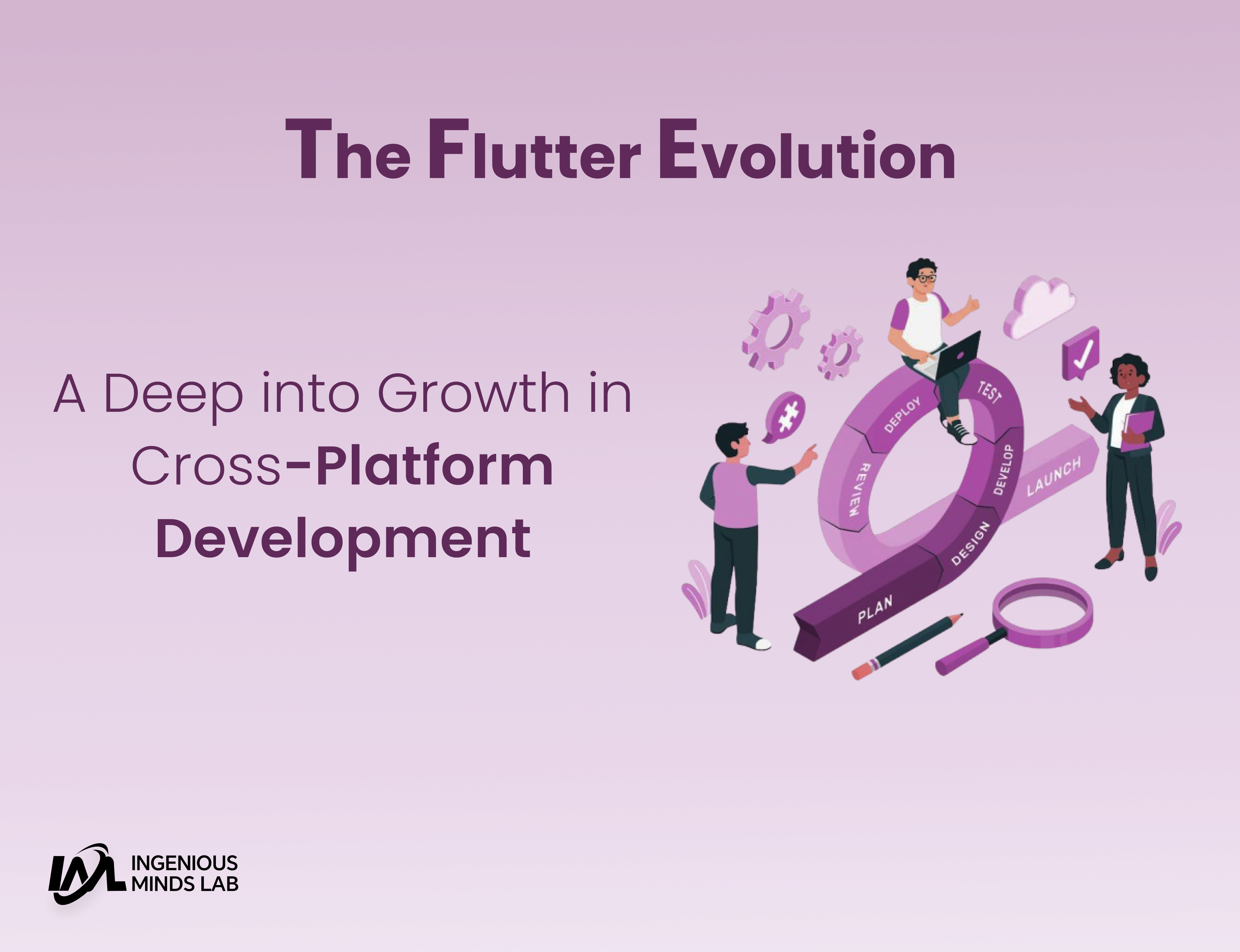Quick Overview:
The Flutter evolution over the last three years has been nothing short of remarkable. It has become one of the leading cross-platform development frameworks, thanks to the collective contributions of its community. In this article, we’ll explore the journey of Flutter, highlighting its evolution and how it has made it easier for developers to tackle complex projects across various platforms. Let’s dive into the Flutter evolution!
The Beginning of Flutter Evolution
When we discuss mobile app development, Flutter evolution stands out as a pivotal shift in the industry. Since its initial release by Google in 2017, Flutter has evolved from a promising project into a leading open-source framework that has made mobile and cross-platform development faster, more efficient, and easier to manage.
Flutter has drastically reduced the complexity and time required for app development, becoming the go-to framework for developers aiming to create applications for Android, iOS, web, desktop, and embedded platforms all from a single codebase. From its debut as “Sky” to its current status as a cross-platform powerhouse, the Flutter evolution has reshaped how mobile applications are built.
An Overview of Flutter Evolution in Recent Years
Developed by Google, Flutter is an incredible UI software development kit (SDK) that has played a significant role in the Flutter evolution by enabling developers to create native-like experiences for both Android and iOS apps.
Originally focusing on mobile app development, Flutter’s capabilities have expanded to include web and desktop platforms, supporting Windows, Linux, and macOS. This rapid Flutter evolution has resulted in Flutter becoming a core tool for developers, offering a robust, multi-platform framework.
Major Releases and Updates in the Flutter Evolution
The Flutter evolution has been marked by several major releases, each bringing new features, performance improvements, and expanded capabilities. Here’s a quick overview of some of the key updates that have shaped its development:
- Flutter 2.0 (March 2021): Introduced stable support for web apps, allowing developers to deploy both mobile and web applications.
- Flutter 2.2 (May 2021): Focused on improving performance, including faster compile times and reduced memory usage.
- Flutter 2.5 (September 2021): Introduced new widgets, DevTools, and enhancements for app development.
- Flutter 3.0 (May 2022): Marked the beginning of true multi-platform support with desktop applications for Windows, macOS, and Linux.
- Flutter 3.3 and Beyond: Continued improvements in performance, stability, and bug fixes.
Each of these releases represents a milestone in the Flutter evolution, contributing to its growing adoption among developers and businesses.
How Flutter Has Evolved to Empower Developers
With each update, Flutter has advanced in several key areas, benefiting both developers and businesses. Here are some of the highlights of the Flutter evolution:
- Improved Performance and Speed
Flutter’s performance has improved dramatically, with optimizations in rendering and battery life. The introduction of the Impeller renderer in Flutter 3.0 further boosted performance, especially on lower-end devices, making the Flutter evolution even more impressive. - Enhanced Developer Experience
The Flutter team has focused on making the development process smoother for developers. Features like hot reload, DevTools, and integration with popular IDEs have all contributed to the Flutter evolution by significantly enhancing developer productivity. - Expanding Widget Libraries and Tools
Flutter’s extensive library of widgets, including Material Design, Cupertino, and adaptive widgets, has grown to support a wide range of user interfaces across platforms. This continued growth in tools is a testament to the Flutter evolution. - Growing Community and Adoption
The Flutter evolution is also reflected in its rapidly growing community. Over 500,000 apps have been built with Flutter, and its community has expanded to over 150,000 developers on platforms like Stack Overflow. The framework has seen increasing adoption by both startups and large enterprises alike. - Native-Like Features Across Platforms
Although Flutter is a cross-platform framework, it offers the flexibility to integrate native features for each platform, further cementing its place in the Flutter evolution. It enables seamless communication with native APIs, creating truly native-like experiences.
The Role of Flutter in Cross-Platform Development
The Flutter evolution has played a crucial role in transforming cross-platform development. By allowing developers to build applications for multiple platforms with a single codebase, Flutter has provided businesses with a cost-effective and efficient solution for app development. The framework’s ability to streamline the development process while maintaining high performance has made it the preferred choice for startups and enterprises alike.
Success Stories: Applications That Showcase the Flutter Evolution
The Flutter evolution is evident in the success stories of numerous applications built with Flutter, such as:
- PUBG Mobile: The popular game uses Flutter for specific in-game features, demonstrating the framework’s adaptability in high-performance environments.
- Reflectly: This journaling app, known for its intuitive UI, offers a smooth experience across both iOS and Android, thanks to Flutter’s cross-platform capabilities.
- Xianyu by Alibaba: Xianyu leverages Flutter’s robust features to create a visually stunning and user-friendly interface for its e-commerce platform.
These success stories underscore the potential of Flutter to revolutionize app development, which is a key part of its evolution.
The Future of Flutter: What’s Next in the Flutter Evolution?
Looking ahead, the future of Flutter is bright. The Flutter evolution is still ongoing, and the framework continues to grow with each release. With its open-source nature and strong community support, Flutter is well-positioned to remain a dominant force in the app development world for years to come.

